Immigrant memoir comics!
Learning about the immigrant experience by reading graphic novels
Today, instead of writing about economics as usual, I thought I’d do a culture post. I’ve given my lists of favorite sci-fi novels and anime series, so I thought I’d do another list — my favorite immigrant memoir comics.
Immigrant memoir comics are my guilty pleasure. I just can’t get enough of reading about the immigrant experience, and I find that graphic novelists often talk about their lives more plainly and truthfully than standard novelists. Interestingly, these comics will give you a broad range of immigrant perspectives — people who love America and do well here, people who reject America or suffer life setbacks, and people who simply tolerate it because they have to. Reading comics like this is a great (and pretty quick) way to understand the truth about the people who come to America.
In the current political climate, I think it’s especially important that we understand this.
So anyway, here are the thirteen best immigrant memoir comics I’ve read.
Mexikid, by Pedro Martín
For me, this is the ultimate graphic novel about the immigrant experience, even though the protagonist (the author himself) is not an immigrant himself, and the story mostly takes place in Mexico. The author was born in the U.S., but his parents and some of his (many) siblings were born in Mexico, so the family basically straddles the two countries — culturally, and sometimes physically. Mexikid is the story of how Pedro and his family drive to Mexico to fetch Pedro’s grandfather, who has become something of a legendary figure within the family due his exploits during the Mexican Civil War.
There are several reasons why this comic is so amazing. There are some authors who just have this natural talent for telling stories that depict the world through the eyes of a child — Bill Watterson of Calvin and Hobbes is one of them, and Pedro Martín is another. The story deals with a lot of dark things — war, poverty, child labor and so on. Pedro’s father even admits to having been an illegal immigrant, before receiving amnesty in 1986. But because the protagonist is a happy kid who can’t quite tell reality from fantasy, even the darker elements are dealt with in a cheerful, cartoonish way. Somehow there’s an overwhelming sense of positivity and optimism.
And the source of that optimism is America itself. Even though the story takes place in Mexico, the author never wastes a chance to show how American culture — from superheroes to musicals to TV shows — pervades everything that these Mexican-American kids love. Behind this, there’s the knowledge that America welcomed this family in, saved them from violence, and gave them security in exchange for hard work. And in return, they give America their love.
Mexikid’s art reinforces this sunny optimism. It’s probably the best visual depiction of the southwestern desert that I’ve ever seen in a comic. Everything is brightly colored, drenched in sun, with wide-open skies — a metaphor for the wide-open possibilities of generations of life in America. If you want a graphic novel to make you feel good about immigration, this is it.
I Was Their American Dream: A Graphic Memoir, by Malaka Gharib
I Was Their American Dream follows an archetype that has basically become the staple of the immigrant memoir genre — the story of a kid who come to America at a young age, and struggles to fit in at school while also dealing with their parents’ old-world quirks and problems. Malaka Gharib executes this in fine form, telling the story of her mixed Egyptian-Filipino family with humor and warmth, and adding plenty of informative cultural context.
Of all the immigrant memoir comics I read, this one was the most unambiguously positive. America never wrongs or excludes the protagonist in any way — she finds a way to fit in at school just as easily as any white kid in the 80s or 90s, and then she goes to college and has fun there too. Her parents get divorced, and her dad moves back to Egypt for a better job, but America remains the land of promise, wealth, and safety. The art is pretty cartoonish, but it adds to the generally silly fun tone.
Racial exclusion barely comes up. The protagonist/author grows up in an immigrant “ethnoburb” in Southern California where there are almost no white people, so white people are simply exotic and interesting to her, rather than dominant and threatening. When she first encounters white people en masse, it’s as a college student, and while they can sometimes be obtuse, she generally views them as fun and even exotic.1
Overall, if you want a story of successful middle-class immigration, this is a good pick. There’s also a sequel called It Won’t Always Be Like This, about the author’s time visiting her father in Egypt.
Almost American Girl: A Graphic Memoir, by Robin Ha
This one has a similar title to I Was Their American Dream, and it also has a very similar storyline. But it’s a significantly darker story — the author/protagonist grows up with a poor single mother from Korea, and struggles to fit in due to her limited English skills and general shyness. These challenges are exacerbated when the family is forced to move to Huntsville, Alabama — not the most welcoming place for nonwhite foreigners, at least at the time.
Still, it’s a triumphant story in the end. The family moves to Virginia, where a more diverse student body at Robin’s high school puts her more at ease and makes it easier to find friends. Interestingly, Japanese comics emerge as a social glue that binds together American kids of various ethnicities (something that, as an observer of weeb culture, I’ve often remarked on). Ultimately, these things help Robin ease into American identity; at the end, after a trip to Korea, she realizes that she’s fundamentally American, and goes back home more optimistic and satisfied with her identity.
There are definitely important lessons here about how to speed assimilation and the adoption of American identity, if people are willing to pay attention. The art is also very beautiful, in an understated way.
They Called Us Enemy, by George Takei
If the previous three comics were the most happy and triumphant stories about immigration, this is the most horrifying. It’s a first-hand account of how Japanese Americans were forced out of their homes and thrown into racial concentration camps during World War 2. There are plenty of memoirs about concentration camps, but this one takes place in America, the Land of the Free, and so to an American reader it hits very hard.
Still, the story manages to end on a hopeful, positive note. The author/protagonist, George Takei, ends up becoming a famous actor (he plays Sulu on the original Star Trek), winning a kind of representation that would never have been possible before or during the war. And the U.S. government eventually pays reparations to the Japanese Americans it wronged. Takei intentionally presents the vision of a America as a self-improving nation — a place that always had promise, and that progressively fulfills more and more of that promise over time.
Just Another Story: A Graphic Migration Account, by Ernesto Saade
This is the best comic I’ve read about illegal immigration. It’s about a Salvadoran boy (the author’s cousin) whose mother decides to take him to America to escape desperate poverty and the constant threat of violence in El Salvador. The story is gripping, tense, and harrowing — it feels like Lord of the Rings, with hobbits sneaking across Mordor. The main danger is not the U.S. Border Patrol, but the various criminals who try to exploit, rob, kidnap, or murder would-be illegal immigrants headed north. In the end, they make it, but only barely, and they’re emotionally scarred for life by the journey.
If you want to understand what’s really at stake when people immigrate illegally, and what they have to face in order to do so, this is a good lesson.
In Limbo, by Deb JJ Lee
This is certainly one of the most beautifully written graphic novels in this list, and certainly the most beautifully illustrated. It’s in black and white, but every page feels like a work of art.
Unfortunately, this is also a story about depression and child abuse. American life, institutions, and culture present zero obstacle to the author/protagonist — in fact, Americans are generally presented as helpful, caring, and well-intentioned. Instead, the entire challenge comes from the protagonist’s troubled family, and from her own spiraling mental illness. (She’s also gay and bad at school, which don’t exactly help the situation at home.)
It’s still quintessentially an immigrant story, because it’s about how second-generation Americans tend to have very little support system outside their families; when those families are dysfunctional, they’re often trapped, with no one they can easily turn to. That’s a thing people without immigrant families tend to forget.
The Best We Could Do: An Illustrated Memoir, by Thi Bui
This is the most famous of another subgenre of immigrant memoir comics: the Vietnam War refugee memoir. Other examples of this include Thien Pham’s Family Style (which I liked, and which is similar to The Best We Could Do but more upbeat), and GB Tran’s Vietnamerica (which was such a faithfully factual account that it didn’t end up telling much of a coherent story).
The Best We Could Do tells the harrowing story of a family of refugees from South Vietnam — what life was like in Vietnam before and during the war, how the family escaped on a boat and made it to the U.S., and their struggles with life in the U.S. as impoverished refugees. It doesn’t depict America as a land of promise or aspiration, but as a desperate compromise. The family doesn’t idolize America, but simply has nowhere else to go. Nor does America shower them with opportunity when they arrive; it’s only through constant hard work, perseverance, and family unity that they manage to make it in their forbidding new home.
Worm: A Cuban American Odyssey, by Edel Rodriguez
This is another story about a refugee from a communist dictatorship — this time, Castro’s Cuba. American leftists tend to have romantic fantasies about revolutionary Cuba, but Worm depicts an impoverished, slowly decaying country filled with fear, where neighbors rat on their neighbors and daily life is ruthlessly repressed. (The art style really compounds the feeling of anxiety.) The title refers both to a parasite that almost kills the author/protagonist, and to the protagonist’s father, who is labeled a “worm” for daring to secretly oppose Castro.
In the end, Rodriguez and his family escape Cuba on the famous 1980 Mariel Boatlift, and make it to America, where they succeed economically (after facing the usual challenges). The Rodriguez family idolizes America for saving them from a brutal dictatorship and giving them the opportunity to become middle-class.
But then Trump gets elected, and the nation suddenly seems far less friendly to immigrants. A now-grown-up Rodriguez decides that Trump is similar to Castro, and decides to use his art to oppose Trump. Rodriguez creates what’s probably still the most iconic political cartoon about Trump — an image of a melting, screaming, eyeless orange head that appeared on the cover of Time. It’s not the happiest ending, but at least America is a place where dissidents can still go against the President in public — at least for now.
Messy Roots: A Graphic Memoir of a Wuhanese American, by Laura Gao
This comic follows the same basic template as I Was Their American Dream and Almost American Girl — an immigrant kid struggling to fit in in school. But unlike those others, this isn’t a triumphant story of assimilation; the author/protagonist suffers constant punishing, brutal social exclusion, which only gets worse after Covid (since her family is from Wuhan). Eventually she rejects the idea of America and travels back to China, but finds that she doesn’t quite fit in there either. She ends on a hopeful note, declaring that she doesn’t really belong anywhere, but it doesn’t feel like a victory.
Huda F. Cares?, by Huda Fahmy
If rightists want to read a story about immigration that confirms all their worst fears, Huda F. Cares? will probably do nicely. It’s a story about a deeply conservative, completely insular Muslim family who lives in America but is not fundamentally of America. They stick primarily to themselves, living out their traditionalist religious lifestyle in seclusion. Their family trip to Disneyland — the one time they let themselves venture outside their enclave — is the subject of the story, and yet almost none of the book is spent describing Disneyland at all. Instead, it’s all about internal family dynamics.
They do occasionally encounter Americans outside their family, but these are pretty much always presented as threats or opponents to be overcome. Regular Americans insult Huda’s family and try to sexually harass the (conservatively dressed) women. When one of the girls is detained at the park for hitting a sexual harasser, the mother takes a video and threatens to summon the online mob against the park security, ultimately forcing them to let her daughter off the hook. At the end, the family decides that the world is always going to be against them, and that they have to stick together as a family to resist.
This is presented as a hopeful conclusion, since the family ultimately puts aside their constant squabbling to unite against the outside world. But it’s not the kind of story a lot of Americans would probably like to hear about immigration.
Why Is Everybody Yelling?: Growing Up in My Immigrant Family, by Marisabina Russo
This is the only story on this list about European immigrants. It takes place in the postwar period, and follows a girl from a Jewish family who becomes a devout Catholic. The backdrop of the story is the Holocaust, and how it basically caused the entire family to have PTSD. It’s interesting how similar this memoir is to the more modern-day ones on the list — the immigrant experience in America is more timeless than people realize. This reads much like a combination of the fish-out-of-water story of Almost American Girl with the refugee story of The Best We Could Do.
I also really liked the art in this comic. It’s richly textured and skillfully expressive.
Uprooted: A Memoir About What Happens When Your Family Moves Back, by Ruth Chan
This one is interesting because it’s a story of remigration — a Canadian girl whose parents move back to Hong Kong when she’s a teenager, taking her with them. Part of the story is about how Ruth’s ancestors escaped World War 2 to Hong Kong, and part of it is about how she struggles to fit in in her parents’ country. Overall this is a very sweet and well-told story, and it demonstrates some of the commonalities of the immigrant experience across countries.
It’s notable, by the way, that the author later immigrated to America, and now lives in NYC, though she describes herself as a “proud Canadian”. In this case, remigration didn’t take; the pull of the New World is strong.
Parachute Kids: A Graphic Novel, by Betty C. Tang
Including Parachute Kids is kind of cheating, because it’s technically fictionalized and not a memoir. It’s the story of a strange and slightly terrifying phenomenon called, well, “parachute kids” — kids from other countries whose parents drop them off in America with friends or relatives, who then pretend to be those kids’ parents, so that the kids can grow up as U.S. citizens and act as anchor babies.
This is kind of a crazy thing to do, and shows the desperate lengths to which people will go to give their kids the chance to be American. The reason I included it in the list is that it definitely feels like a lightly fictionalized memoir — the kind of thing you’d write as fiction if you didn’t want to get anyone in trouble.
Interestingly, despite the fraud and child abandonment, the story of the parachute kids is told as a hopeful, positive tale of resilience. Americans are almost always presented as friendly, helpful people, and the parachute kids themselves are resourceful and strong. In the end, they make it in America. Stories like this are a reminder that our immigration system is just too restrictive; people like the protagonists of Parachute Kids should have just been allowed to move in, without having to separate their family.
At one point the protagonist declares that “I KISSED A LOOOOTTTTT OF WHITE GUYS.” This is not necessarily the kind of thing you’d want to write in a graphic novel in the “woke” age, but I found its innocent confident positivity to be extremely charming.



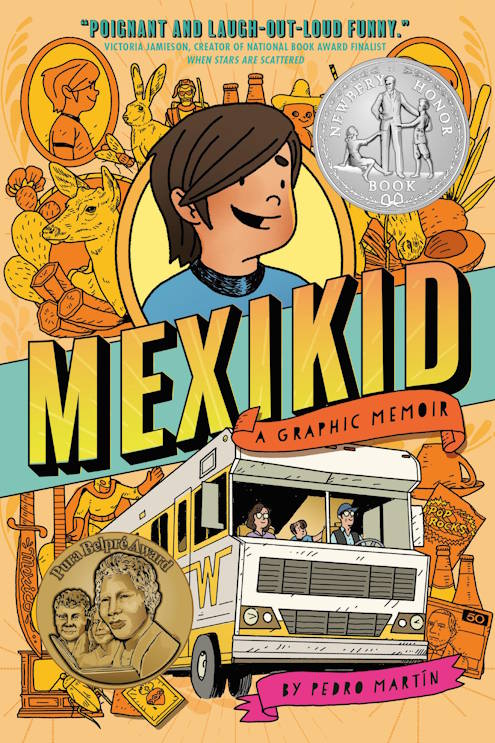
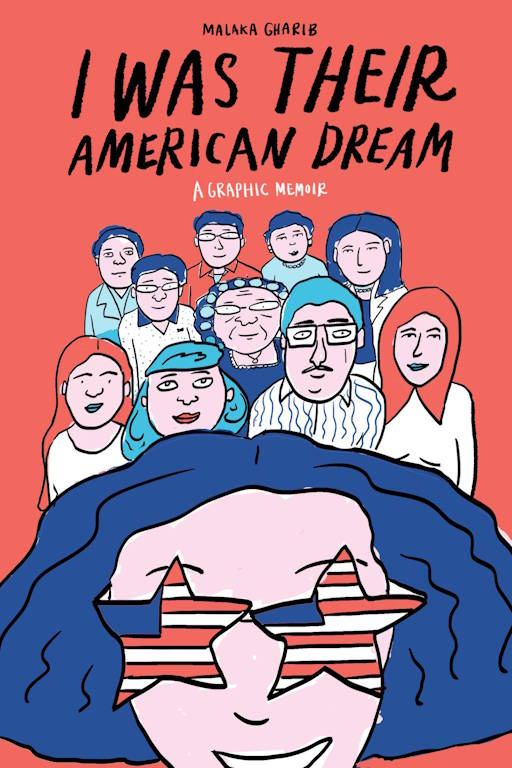
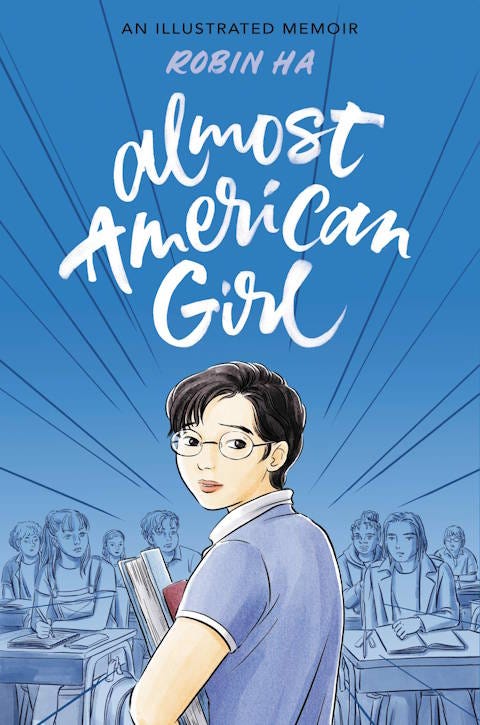
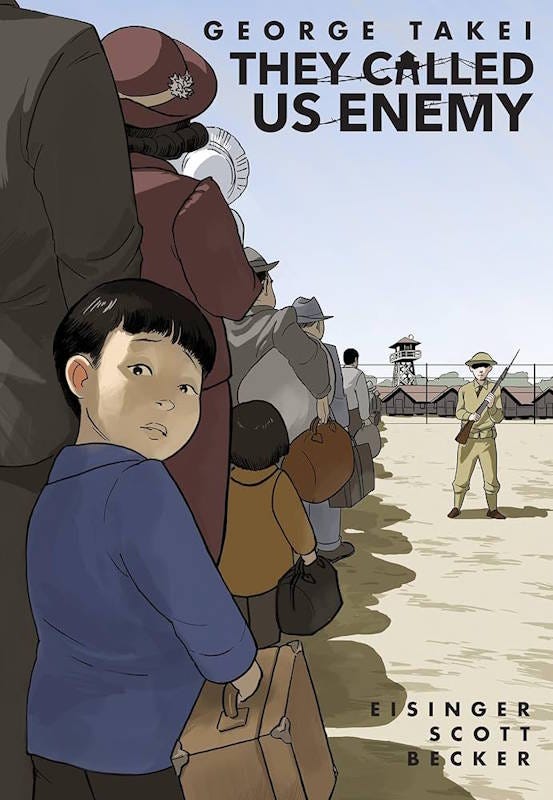
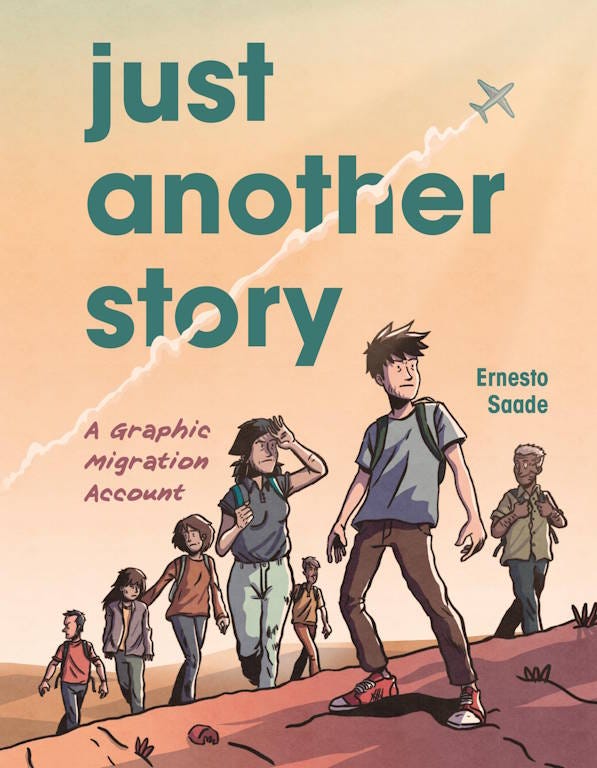
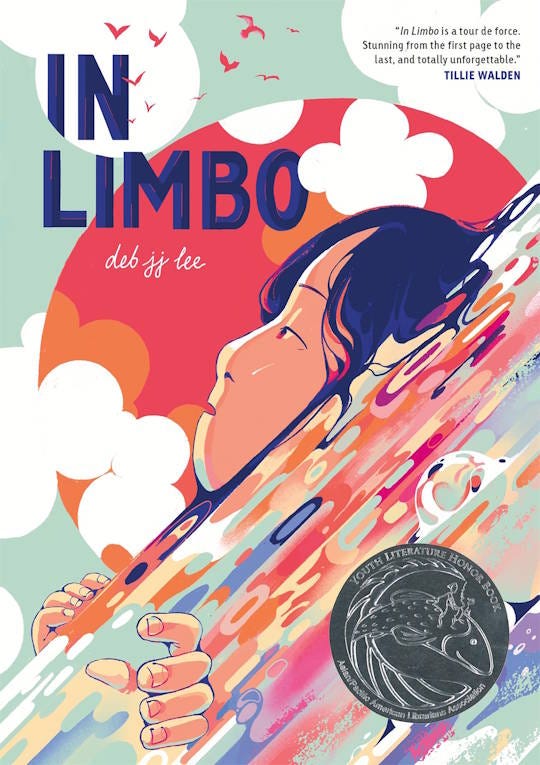

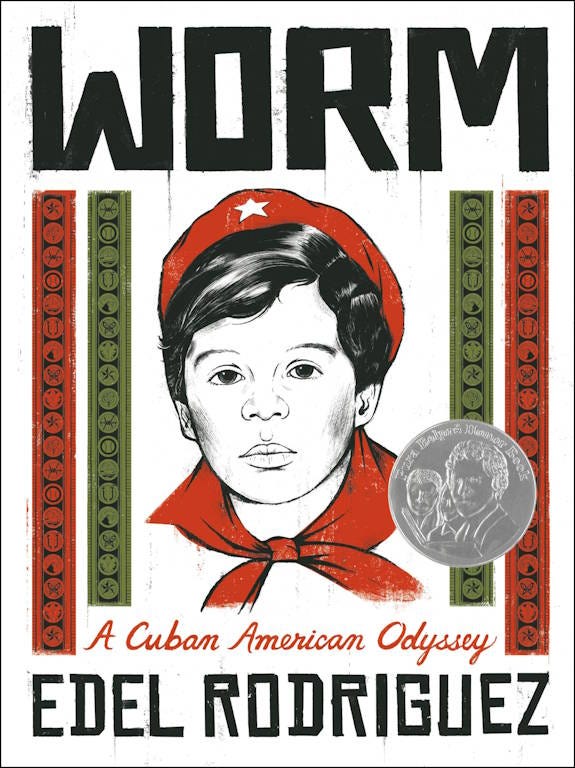
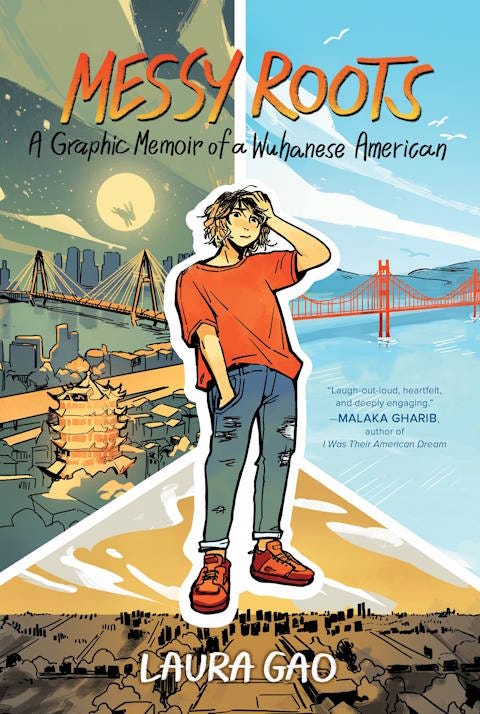

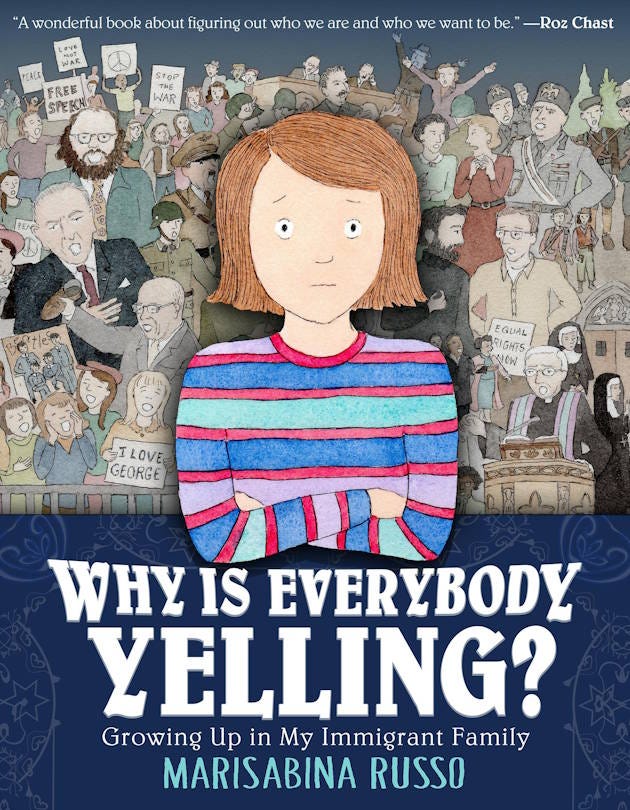
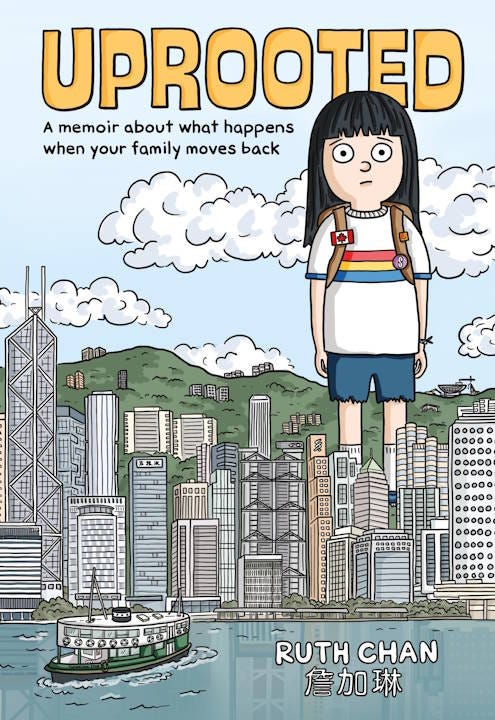
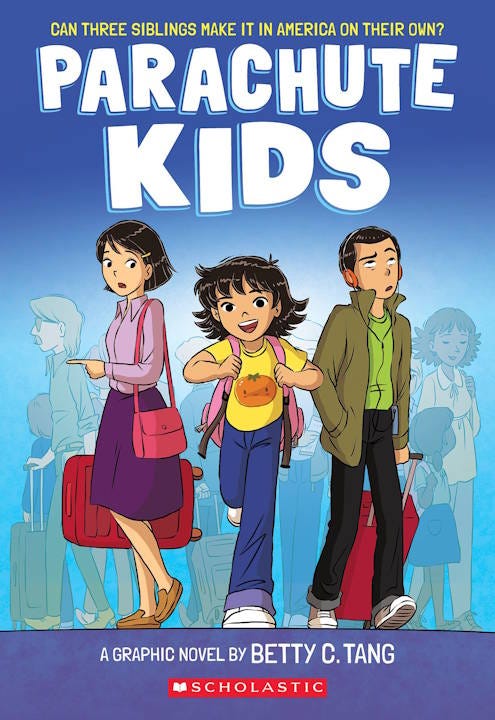
A whole new world which I did not know existed.... thanks
Thanks for the reviews, I ordered a few of these. Another non-fiction graphic book (not a novel) about American immigration that complements these books and which I highly recommend is Bryan Caplan’s Open Borders: The Science and Ethics of Immigration which presents the economic and societal benefits of increased immigration.
https://www.goodreads.com/book/show/42867903